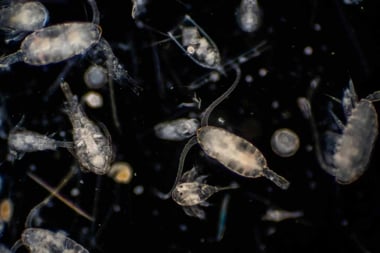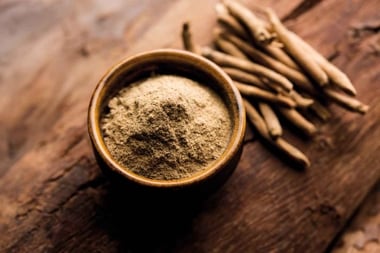The Therapeutic Bath

Peat-heat treatment detoxifies and enhances immunity Revered medicinally for thousands of years, peat is produced when plant materials decompose in nature; the result is a carbon-rich substance that contains an abundance of mi.
Revered medicinally for thousands of years, peat is produced when plant materials decompose in nature; the result is a carbon-rich substance that contains an abundance of minerals, trace elements, organic compounds, enzymes and other beneficial materials.
Long considered a respite from the day's stresses, the bath is yet another form of therapy in the naturopathic arsenal against degenerative diseases such as arthritis and cancer.
"Balneotherapy" is a term for therapeutic bathing, often in mineral springs or enriched waters. It is extremely popular in European countries such as Poland and Germany, where a fair body of research has been generated (unfortunately, most of it not in English). In her review of health-care research from the former Soviet Union, Linda Grabbe, PhD, RN, notes that balneotherapy is a routine part of medical treatment, often integrated into standard medical procedures for problems such as poor circulation, high blood pressure, pelvic inflammatory disease, skin disorders and cardiovascular conditions. "The rationale for the use of salt, sand, peat, cupping glasses and mustard plasters is to irritate the skin, thereby stimulating the flow of blood that is rich in oxygen, nutrients and antibodies to an ill spot," she writes in International Family Medicine in March 2000.
Here in North America, therapeutic bathing often with salts, muds, herbs, minerals or other additives is increasingly common at health spas and clinics, including at the naturopathic clinic at Bastyr University. In particular, one form of balneotherapy involving the use of peat is showing great promise as a complementary treatment for cancer and other degenerative diseases. Revered medicinally for thousands of years, peat is produced when plant materials decompose in nature; the result is a carbon-rich substance that contains an abundance of minerals, trace elements, organic compounds, enzymes and other beneficial materials.
Peat therapy works by enhancing the immune system's white blood cells and natural killer cells, improving blood and lymph circulation, and spurring metabolic cell activity. Local applications of peat, where the peat is heated and spread directly onto a body part, has proven useful in cases of injury, rheumatic pain and infections of the lungs, chest (cold/flu), kidneys and liver. Peat bathing is generally a whole-body immersion in a tub of peat-infused hot water; the heat stimulates the medicinal effects of the peat.
Naturopathic physician Jim Chan, who specializes in treating cancer at his Vancouver clinic, often uses peat balneotherapy as part of his patients' complementary treatment regimens. Dr. Chan explains that peat contains fulvic acid, an organic acid with the ability to neutralize a specific toxic chemical that adversely affects the body's P53 protein. It is this protein that helps prevent cancer by repairing genetic faults. If the P53 protein mechanism isn't working, then the body's ability to repair damaged (precancerous) genes is hindered.
Hot peat baths, typically at temperatures upwards of 100 degrees F, help prevent cancer cells from replicating and further detoxify the body. Many cancer-causing chemicals also implicated in other chronic diseases get stored in the body's fat cells over time. The combination of peat and heat mobilizes these toxins, and with the added effect of increased circulation eliminates them quicker, mostly through perspiration. At the same time, the skin absorbs the nutrients found in peat.
This sort of detoxification is a key tenet of wholistic cancer care. A naturopathic physician considers factors such as diet, lifestyle, stress level, mental attitude and the body's toxic load, as well as external exposure to electromagnetic radiation and pollution through food, air and water. Whether used in conjunction with conventional chemotherapy, radiation and surgery, recommendations can include dietary modifications, nutritional supplements, anti-cancer herbs or substances the goal being to boost the body's healing and detoxification abilities and/or increase killing of cancer cells.
In additional to its benefits for cancer care, peat bathing is also good for health maintenance, says Dr. Chan, in particular for those with arthritis and lupus. Peat possesses antibacterial and antiviral effects, as well as the ability to relax muscles and reduce the body's inflammatory response.
However, any old peat won't do. In clinical settings, the peat of choice has often been sterilized and checked for quality. So if you're considering peat balneotherapy for a serious health condition, a qualified medical professional should be able to provide you with complete details as to its promising therapeutic benefits.
Tub Food
| Herbal Bath Additives | Properties |
| Chamomile | Anti-inflammatory, calming; treats colds and flu |
| Pine or spruce needle | Refreshing, uplifting, energizing; treats tiredness, chills, sports fatigue, muscle tension |
| Lavender | Relaxing, energizing; reduces itching and swelling of insect bites |
| Arnica | Relieves muscle aches, rheumatism and arthritis pain |
| Lemon balm/melissa | Relaxing, calming; treats sleep problems, migraine anxiety |
| Thyme | Treats coughs, respiratory and digestive problems |
| Mustard | Treats cold and flu |




